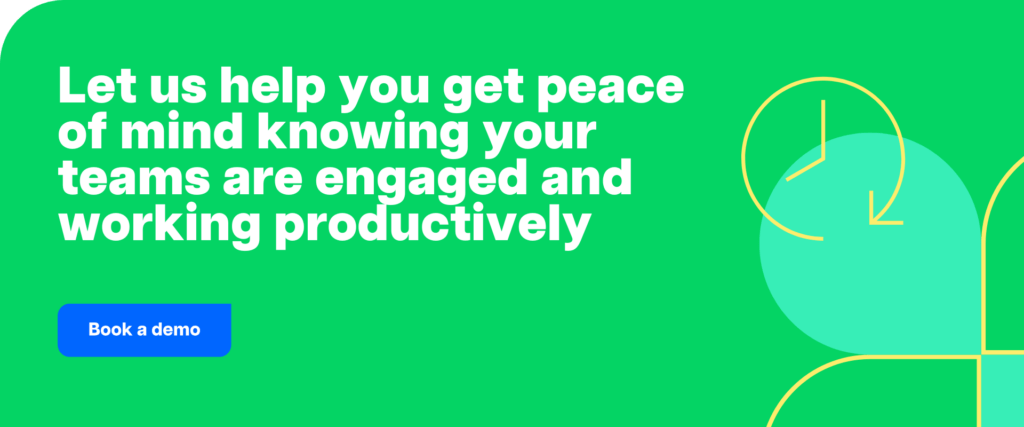Competitive intelligence (CI) is a vital strategic instrument that helps companies to comprehend the tactics of their rivals and remain ahead of industry trends. Although it is frequently associated with product development and marketing, its impact also extends to human resources, especially with regard to staff retention tactics. This article examines the role that CI can play in keeping elite talent.
Table of Contents
- What is competitive intelligence?
- Why competitive intelligence is important for employee retention
- How competitive intelligence works
- Understanding the types of competitive intelligence
- Implementing competitive intelligence in your organization
- Challenges and considerations
What is competitive intelligence?
Competitive intelligence involves the systematic collection, analysis, and application of information about competitors, market conditions, and any external business environment. It helps companies anticipate market shifts, uncover new opportunities, and mitigate risks. The practice is not about corporate espionage but rather about making informed decisions based on legally gathered data.

Why competitive intelligence is important for employee retention
Retaining competent employees is just as important as hiring them in today’s cutthroat employment market. Companies can modify their services to meet or exceed industry norms by using competitive intelligence (CI), which gives insights into what rivals provide in terms of pay, perks, work culture, and growth possibilities.
- Insight into competitor offerings: Competitive intelligence provides information about what rivals are offering in terms of pay, perks, workplace culture, and career advancement possibilities. This enables businesses to compare their own products to those of the competition.
- Strategic adjustments: Equipped with this knowledge, businesses can modify their own products to either match or surpass industry norms. This guarantees them appealing and competitive job packages.
- Attracting top talent: Businesses can draw top talent away from competitors by matching their offerings to the finest in the business.
- Reducing turnover: Reducing employee turnover can be achieved by making sure that workers feel appreciated and have opportunities for personal development. If workers feel their needs and career goals can be satisfied, they are less likely to quit.
- Employee satisfaction and loyalty: A work environment where people are really satisfied and loyal is fostered by competitive intelligence. This is a direct outcome of responsively changing procedures and regulations to better reflect the competitive environment.
In addition to attracting top talent, this strategic approach lowers employee turnover by making sure workers feel appreciated and perceive room for personal development inside the organization.
How competitive intelligence works
Businesses employ competitive intelligence (CI), a methodical procedure, to stay ahead of their sector. This means that HR professionals should use CI to obtain insights that can help them make better decisions about employee management, retention, and satisfaction.
Implementing CI involves several steps:
- Planning: Identifying the information that is required and its intended use is the first step in the process. This entails figuring out the most important intelligence queries that support the organization’s strategic objectives, especially in the area of human resources.
- Collection: Collect information from a range of sources, including public records, social media, professional networks, industry publications, and in-person competitor analysis. This broad scope guarantees a thorough comprehension of the competitive environment.
- Analysis: Analyzing the data gathered to find patterns, opportunities, and dangers is the goal of this step. For HR, this can entail looking at trends in employee churn, comparing benefit plans, and assessing work-life balance benchmarks set by the sector.
- Dissemination: Discuss the findings with the pertinent organizational stakeholders. This guarantees that those in charge of making decisions have access to the most recent information to guide their plans, especially when it comes to developing employee retention policies.
- Action: Using the intelligence acquired, make strategic judgments as the last stage. This could entail updating benefit packages, changing pay scales, or launching fresh initiatives for staff growth in response to what other companies are providing.
Applying CI to HR professionals involves more than just staying up to date with trends in remuneration; it also entails knowing deeper measures like employee satisfaction and the effects of new HR technologies. Businesses can foresee changes in the industry, proactively address labor needs, and maintain a competitive edge in personnel management by incorporating CI into HR operations.

Understanding the types of competitive intelligence
The discipline of competitive intelligence (CI) is not universally applicable; rather, it varies greatly based on the strategic requirements of the company. Companies use various forms of CI to target particular opportunities and problems in their market environment. Organizations may focus and improve the effectiveness of their intelligence operations by understanding the many forms of corporate intelligence.
- Tactical CI: This kind of intelligence concentrates on pressing operational problems like pricing and sales strategies. It enables businesses to react swiftly to shifts in the market and actions taken by competitors, guaranteeing competitive pricing and successful sales strategies.
- Strategic CI: CI examines longer-term, more comprehensive developments, such as modifications to industry legislation, technological breakthroughs, and changes in customer behavior. For long-term planning and maintaining corporate growth, this intelligence is essential.
- Technical CI: Technical competitive intelligence, or CI, is the process of obtaining information on new and developing technologies and product capabilities in the market. This is especially crucial for tech-driven businesses trying to develop or enhance their product offerings.
- Human Resources CI: Focused on workforce management, this kind of CI examines how rivals are luring and keeping personnel. It contains information about the compensation, benefits, and work environment policies of competitors, which can help guide an organization’s own HR initiatives.
The strategic importance of diverse competitive intelligence
Every kind of competitive intelligence has a strategic function that advances an organization’s all-encompassing comprehension of the competitive environment. Businesses may guarantee a comprehensive approach to intelligence by combining tactical, strategic, technological, and human resources intelligence.
Businesses may maintain flexibility and responsiveness to short- and long-term market changes by utilizing this varied use of CI, which gives them a competitive advantage in luring and keeping top people as well as in other operational domains.
Implementing competitive intelligence in your organization
Competitive intelligence (CI) is a great tool for improving employee retention, but its use needs to be done well for it to work. The ensuing manual describes how businesses may use CI to stay ahead of the competition and attract and retain outstanding people.
- Establish a dedicated CI team: This team should be in charge of compiling and evaluating competition and market data that is pertinent to human resources. The information gathered is guaranteed to be both specific and pertinent when trained staff members are assigned to these responsibilities.
- Use the right tools: Make use of technologies and techniques for data analytics that can offer up-to-date information into rival benchmarks. Utilizing advanced instruments improves the precision and relevance of the information.
- Focus on actionable intelligence: Put an emphasis on useful intelligence Make sure the information acquired is useful and directly related to enhancing staff retention tactics. This entails converting unprocessed data into workable implementation plans.
- Regular updates: Recurring updates By frequently updating the data and insights, you can keep your strategy current and applicable. Since the employment market is ever-changing, keeping up with it helps the company stay flexible and responsive to changes.
Using competitive intelligence in a business involves more than just gathering information; it also entails transforming that information into calculated decisions that have an immediate influence on employee retention.
By taking these actions, businesses can make sure that their efforts to gather competitive information are efficient, focused, and continuously improved to satisfy the changing needs of both their workforce and the labor market.
In today’s fast-paced business environment, every corporation hoping to maintain a content and dedicated workforce must adopt this proactive strategy.
Challenges and considerations
Strategic insights into the competitive landscape can be obtained with great benefit from the application of competitive intelligence (CI). Its implementation within an organization is not without difficulties, though. Prioritizing ethical issues means that the collection and application of intelligence must be done with caution.
Even though CI has many advantages, there are drawbacks and moral dilemmas. The most important is making sure that all intelligence operations are morally and legally righteous, abstaining from any actions that could be construed as corporate espionage. Furthermore, accurate data interpretation is essential since incorrect interpretations might result in subpar strategic choices.
Organizations that perform competitive intelligence must set clear principles and ethical standards in order to successfully manage these hurdles. To guarantee that all workers engaged in CI activities comprehend the ethical and legal ramifications of their employment, training and continuous education are crucial. Strong procedures must be in place to confirm and validate the data gathered in order to prevent misunderstandings that could negatively impact decision-making.
Competitive intelligence can be a useful tool for boosting strategic decision-making and staff retention, but it needs to be used carefully. Companies may use CI to sustain a competitive edge and develop a more resilient workforce by managing the ethical and practical issues associated with it.
Conclusion
One effective weapon in the human resources department’s toolbox is competitive intelligence. Companies are able to create superior employee retention strategies that meet changing employee expectations and market demands by having a thorough awareness of the competitive landscape. CI will remain a crucial component in helping businesses not only survive but also prosper by maintaining their most precious asset—their people—as the business environment continues to change quickly.

Andy is a technology & marketing leader who has delivered award-winning and world-first experiences.


